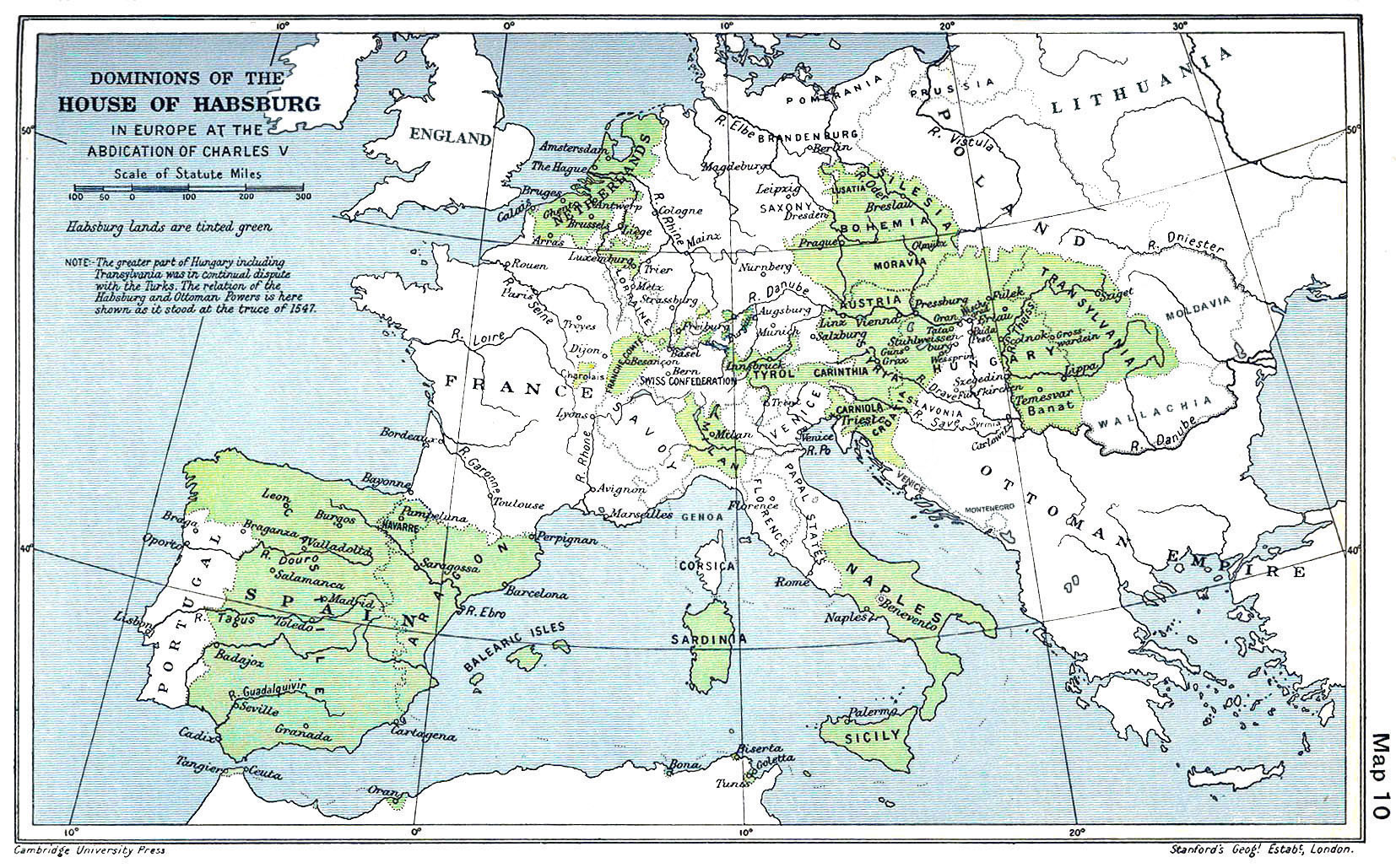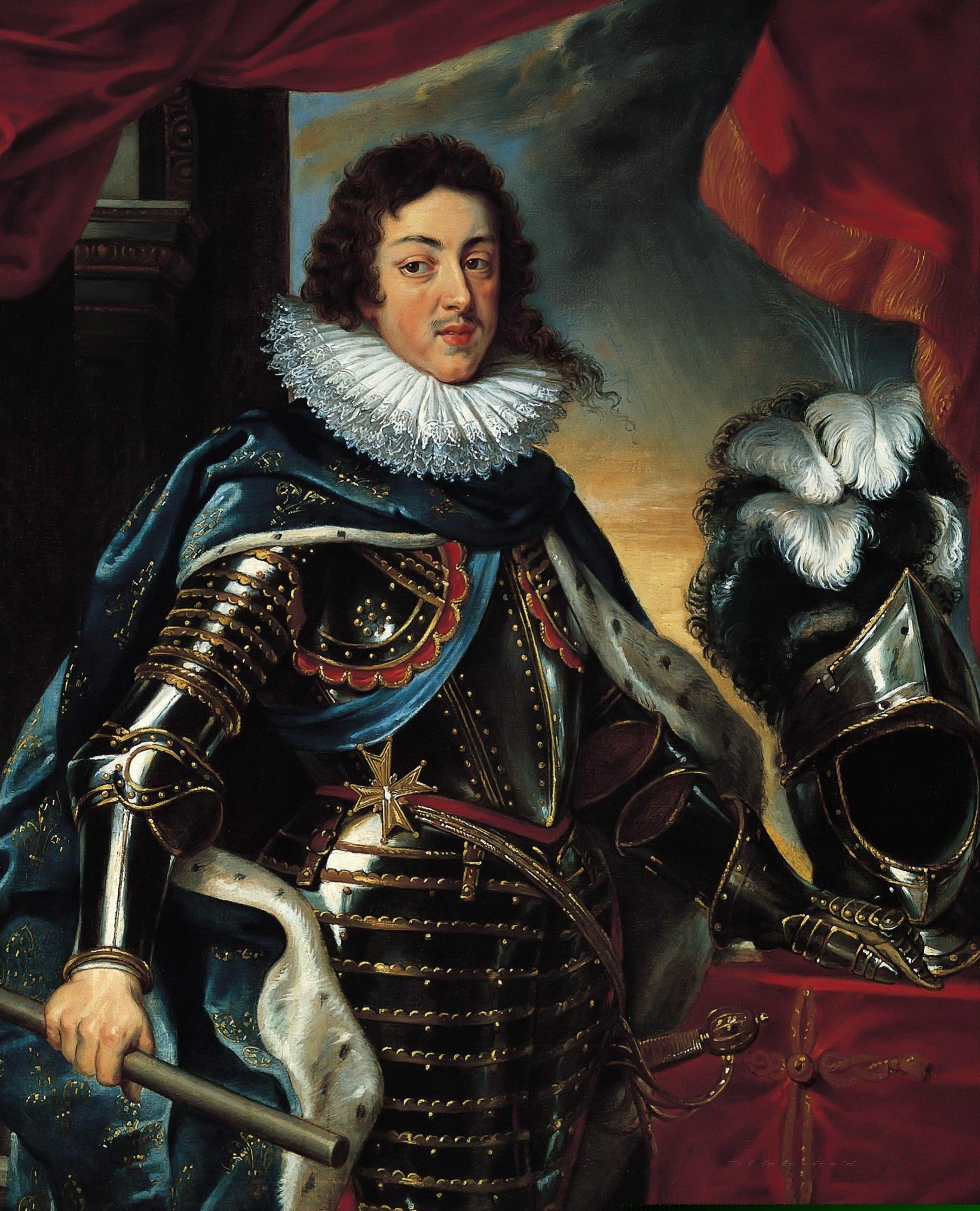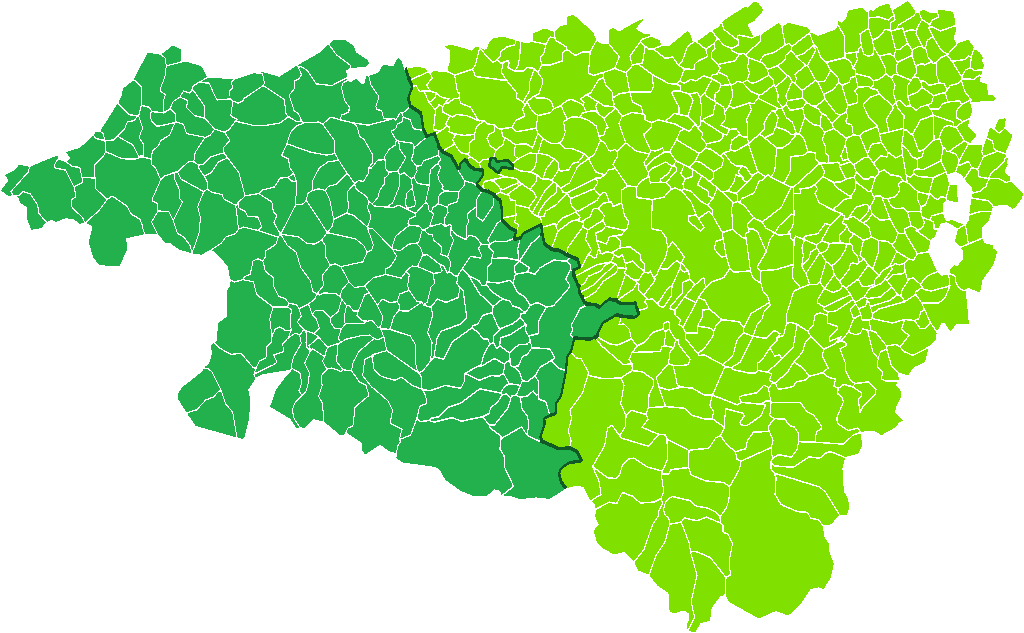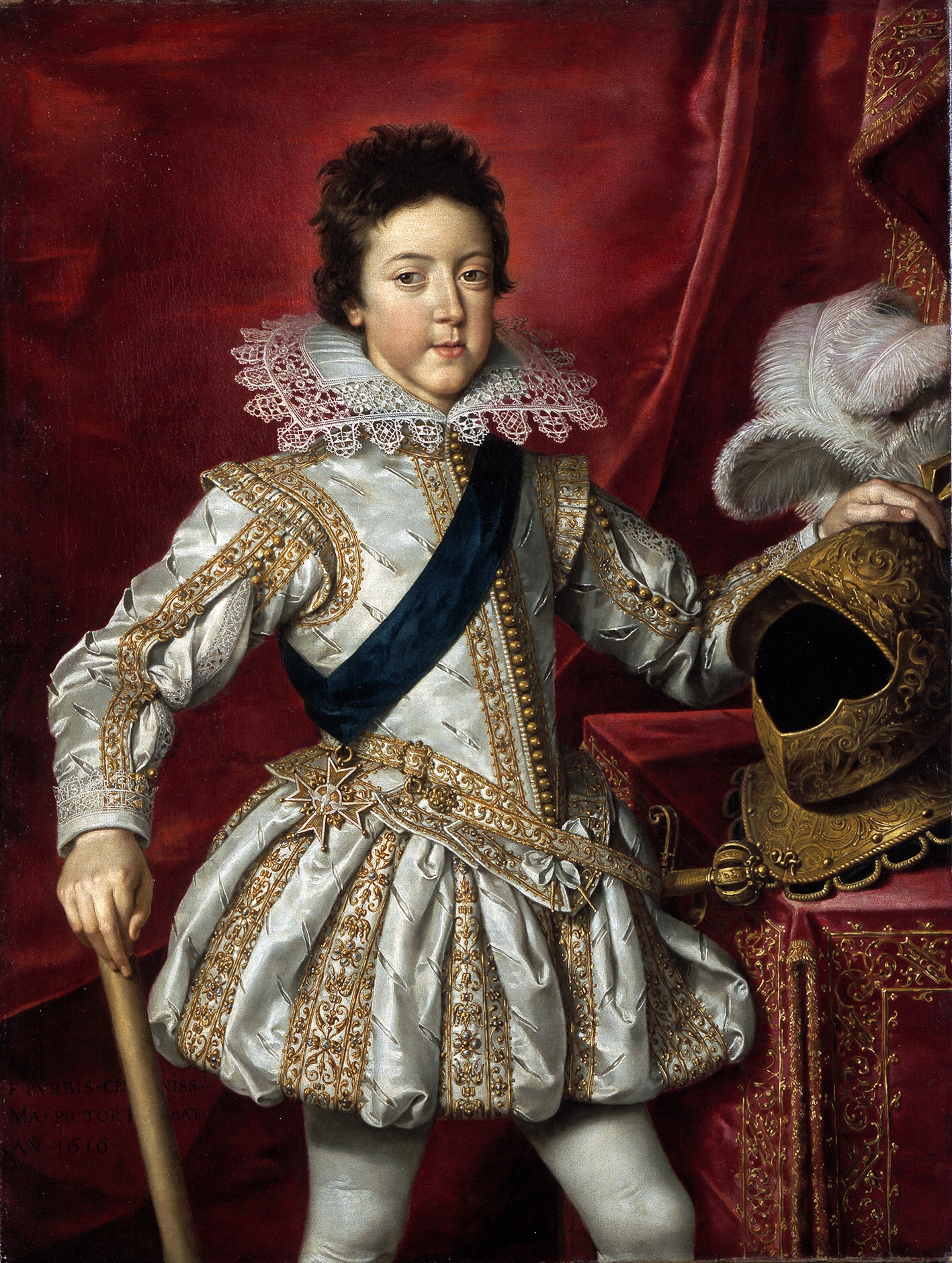|
Treaty Of Compiègne (1624)
The Treaty of Compiègne, signed on 10 June 1624, was a mutual defence alliance between the Kingdom of France and the Dutch Republic, for an initial period of three years. One of a series of treaties designed to isolate Spain, France agreed to subsidise the Dutch in their War of Independence in return for naval assistance, and trading privileges. It ultimately proved controversial, since its provisions were used to require the Protestant Dutch to help suppress their French co-religionists in La Rochelle. Background The first half of the 17th century in Europe was dominated by the struggle between the Bourbon kings of France and their Habsburg rivals in Spain and in the Holy Roman Empire. Habsburg territories in the Spanish Netherlands, Franche-Comté, and the Pyrenees blocked French expansion, and made it vulnerable to invasion. During the French Wars of Religion, Spain co-operated with the Catholic League in occupying large areas of France, before the succession of Henry I ... [...More Info...] [...Related Items...] OR: [Wikipedia] [Google] [Baidu] |
Cardinal Richelieu
Armand Jean du Plessis, Duke of Richelieu (; 9 September 1585 – 4 December 1642), known as Cardinal Richelieu, was a French clergyman and statesman. He was also known as ''l'Éminence rouge'', or "the Red Eminence", a term derived from the title "Eminence" applied to cardinals and the red robes that they customarily wear. Consecrated a bishop in 1607, Richelieu was appointed Foreign Secretary in 1616. He continued to rise through the hierarchy of both the Catholic Church and the French government by becoming a cardinal in 1622 and chief minister to King Louis XIII of France in 1624. He retained that office until his death in 1642, when he was succeeded by Cardinal Mazarin, whose career he had fostered. He also became engaged in a bitter dispute with the king's mother, Marie de Médicis, who had once been a close ally. Richelieu sought to consolidate royal power and restrained the power of the nobility in order to transform France into a strong centralized state. In f ... [...More Info...] [...Related Items...] OR: [Wikipedia] [Google] [Baidu] |
Pyrenees
The Pyrenees (; es, Pirineos ; french: Pyrénées ; ca, Pirineu ; eu, Pirinioak ; oc, Pirenèus ; an, Pirineus) is a mountain range straddling the border of France and Spain. It extends nearly from its union with the Cantabrian Mountains to Cap de Creus on the Mediterranean coast. It reaches a maximum altitude of at the peak of Aneto. For the most part, the main crest forms a divide between Spain and France, with the microstate of Andorra sandwiched in between. Historically, the Crown of Aragon and the Kingdom of Navarre extended on both sides of the mountain range. Etymology In Greek mythology, Pyrene is a princess who gave her name to the Pyrenees. The Greek historian Herodotus says Pyrene is the name of a town in Celtic Europe. According to Silius Italicus, she was the virgin daughter of Bebryx, a king in Mediterranean Gaul by whom the hero Hercules was given hospitality during his quest to steal the cattle of Geryon during his famous Labours. Hercules, chara ... [...More Info...] [...Related Items...] OR: [Wikipedia] [Google] [Baidu] |
Habsburg Map 1547
The House of Habsburg (), alternatively spelled Hapsburg in Englishgerman: Haus Habsburg, ; es, Casa de Habsburgo; hu, Habsburg család, it, Casa di Asburgo, nl, Huis van Habsburg, pl, dom Habsburgów, pt, Casa de Habsburgo, la, Domus Habsburg, french: Maison des Habsbourg and also known as the House of Austriagerman: link=no, Haus Österreich, ; es, link=no, Casa de Austria; nl, Huis van Oostenrijk, pl, dom Austrii, la, Domus Austriæ, french: Maison d'Autriche; hu, Ausztria Háza; it, Casa d'Austria; pt, Casa da Áustria is one of the most prominent and important dynasties in European history. The house takes its name from Habsburg Castle, a fortress built in the 1020s in present-day Switzerland by Radbot of Klettgau, who named his fortress Habsburg. His grandson Otto II was the first to take the fortress name as his own, adding "Count of Habsburg" to his title. In 1273, Count Radbot's seventh-generation descendant Rudolph of Habsburg was elected King of the R ... [...More Info...] [...Related Items...] OR: [Wikipedia] [Google] [Baidu] |
Treaty Of Montpellier
The Treaty of Montpellier (or the Peace of Montpellier) was signed in Montpellier on 18 October 1622 between King Louis XIII of France and Duke Henry II of Rohan. The treaty followed the siege of Montpellier and ended hostilities between French royalists and the Huguenots. Moreover, it confirmed the tenets of the Edict of Nantes, pardoned Henry II, and allowed the Huguenots to maintain their numerous forts and garrisons. See also *List of treaties This list of treaties contains known agreements, pacts, peaces, and major contracts between states, armies, governments, and tribal groups. Before 1200 CE 1200–1299 1300–1399 1400–1499 1500–1599 1600–1699 1700–1799 ... External linksLouis XIII and Religion {{Montpellier-stub 1622 in France 1622 treaties Montpellier Montpellier Huguenot rebellions History of Occitania (administrative region) ... [...More Info...] [...Related Items...] OR: [Wikipedia] [Google] [Baidu] |
Benjamin De Rohan, Duc De Soubise
Benjamin de Rohan, duc de Soubise (1580–1642), was a French Huguenot leader. Son of René II, Viscount of Rohan, and younger brother of Henri de Rohan, he inherited the lordship of Soubise through his mother Catherine de Parthenay. He served his apprenticeship as a soldier under Maurice of Nassau in the Low Countries. In the religious wars from 1621 onwards his elder brother chiefly commanded on land and in the south, Soubise in the west and along the sea-coast. His exploits in the conflict have been sympathetically related by his brother, one of the most highly regarded military critics of the time. Soubise's chief exploit was a singularly bold and well-conducted attack (in 1625) on the Royalist fleet in the river Blavet (which included the cutting of a boom in the face of superior numbers) and the occupation of the islands of Ré and Oléron in 1625, leading to the Siege of Saint-Martin-de-Ré (1625) in which Louis XIII recovered the island of Ré. He commanded at La R ... [...More Info...] [...Related Items...] OR: [Wikipedia] [Google] [Baidu] |
Henri De Rohan
Henri (II) de Rohan (21 August 157913 April 1638), Duke of Rohan and Prince of Léon, was a Breton-French soldier, writer and leader of the Huguenots. Early life Rohan was born at the Château de Blain (now a part of Blain, Loire-Atlantique), in Brittany. His father was René II, viscount of Rohan (1550–1586), and head of one of the oldest and most distinguished families in France, which was connected with many of the reigning houses of Europe.''Louis XIV, and the Court of France in the Seventeenth Century: In Three Volumes (Volume 1)'' by Julia Pardoe (Bentley, 1847) He was educated by his mother, Catherine de Parthenay, who was a woman ... [...More Info...] [...Related Items...] OR: [Wikipedia] [Google] [Baidu] |
Huguenot Rebellion
The Huguenot rebellions, sometimes called the Rohan Wars after the Huguenot leader Henri de Rohan, were a series of rebellions of the 1620s in which French Calvinist Protestants (Huguenots), mainly located in southwestern France, revolted against royal authority. The uprising occurred a decade after the death of Henry IV who, himself originally a Huguenot before converting to Catholicism, had protected Protestants through the Edict of Nantes. His successor Louis XIII, under the regency of his Italian Catholic mother Marie de' Medici, became more intolerant of Protestantism. The Huguenots tried to respond by defending themselves, establishing independent political and military structures, establishing diplomatic contacts with foreign powers, and openly revolting against central power. The Huguenot rebellions came after two decades of internal peace under Henry IV, following the intermittent French Wars of Religion of 1562–1598. First Huguenot rebellion (1620–1622) The fi ... [...More Info...] [...Related Items...] OR: [Wikipedia] [Google] [Baidu] |
Béarn
The Béarn (; ; oc, Bearn or ''Biarn''; eu, Bearno or ''Biarno''; or ''Bearnia'') is one of the traditional provinces of France, located in the Pyrenees mountains and in the plain at their feet, in southwest France. Along with the three Basque provinces of Soule, Lower Navarre, and Labourd, the Principality of Bidache, as well as small parts of Gascony, it forms in the southwest the current ''département'' of Pyrénées-Atlantiques (64). The capitals of Béarn were Beneharnum (until 841), Morlaàs (from ca. 1100), Orthez (from the second half of the 13th century), and then Pau (beginning in the mid-15th century). Béarn is bordered by Basque provinces Soule and Lower Navarre to the west, by Gascony ( Landes and Armagnac) to the north, by Bigorre to the east, and by Spain (Aragon) to the south. Today, the mainstays of the Béarn area are the petroleum industry, the aerospace industry through the helicopter turboshaft engine manufacturer Turbomeca, tourism and ... [...More Info...] [...Related Items...] OR: [Wikipedia] [Google] [Baidu] |
Thirty Years War
The Thirty Years' War was one of the longest and most destructive conflicts in European history, lasting from 1618 to 1648. Fought primarily in Central Europe, an estimated 4.5 to 8 million soldiers and civilians died as a result of battle, famine, and disease, while some areas of what is now modern Germany experienced population declines of over 50%. Related conflicts include the Eighty Years' War, the War of the Mantuan Succession, the Franco-Spanish War, and the Portuguese Restoration War. Until the 20th century, historians generally viewed it as a continuation of the religious struggle initiated by the 16th-century Reformation within the Holy Roman Empire. The 1555 Peace of Augsburg attempted to resolve this by dividing the Empire into Lutheran and Catholic states, but over the next 50 years the expansion of Protestantism beyond these boundaries destabilised the settlement. While most modern commentators accept differences over religion and Imperial authority were im ... [...More Info...] [...Related Items...] OR: [Wikipedia] [Google] [Baidu] |
Louis XIII
Louis XIII (; sometimes called the Just; 27 September 1601 – 14 May 1643) was King of France from 1610 until his death in 1643 and King of Navarre (as Louis II) from 1610 to 1620, when the crown of Navarre was merged with the French crown. Shortly before his ninth birthday, Louis became king of France and Navarre after his father Henry IV was assassinated. His mother, Marie de' Medici, acted as regent during his minority. Mismanagement of the kingdom and ceaseless political intrigues by Marie and her Italian favourites led the young king to take power in 1617 by exiling his mother and executing her followers, including Concino Concini, the most influential Italian at the French court. Louis XIII, taciturn and suspicious, relied heavily on his chief ministers, first Charles d'Albert, duc de Luynes and then Cardinal Richelieu, to govern the Kingdom of France. The King and the Cardinal are remembered for establishing the ''Académie française'', and ending the revolt o ... [...More Info...] [...Related Items...] OR: [Wikipedia] [Google] [Baidu] |
Regent
A regent (from Latin : ruling, governing) is a person appointed to govern a state ''pro tempore'' (Latin: 'for the time being') because the monarch is a minor, absent, incapacitated or unable to discharge the powers and duties of the monarchy, or the throne is vacant and the new monarch has not yet been determined. One variation is in the Monarchy of Liechtenstein, where a competent monarch may choose to assign regency to their of-age heir, handing over the majority of their responsibilities to prepare the heir for future succession. The rule of a regent or regents is called a regency. A regent or regency council may be formed ''ad hoc'' or in accordance with a constitutional rule. ''Regent'' is sometimes a formal title granted to a monarch's most trusted advisor or personal assistant. If the regent is holding their position due to their position in the line of succession, the compound term '' prince regent'' is often used; if the regent of a minor is their mother, she would ... [...More Info...] [...Related Items...] OR: [Wikipedia] [Google] [Baidu] |
Marie De' Medici
Marie de' Medici (french: link=no, Marie de Médicis, it, link=no, Maria de' Medici; 26 April 1575 – 3 July 1642) was Queen of France and Navarre as the second wife of King Henry IV of France of the House of Bourbon, and Regent of the Kingdom of France officially between 1610 and 1617 during the minority of her son, Louis XIII of France. Her mandate as regent legally expired in 1614, when her son reached the age of majority, but she refused to resign and continued as regent until she was removed by a coup in 1617. A member of the powerful House of Medici in the branch of the Grand Dukes of Tuscany, the wealth of her family caused Marie to be chosen by Henry IV to become his second wife after his divorce from his previous wife, Margaret of Valois. The assassination of her husband in 1610, which occurred the day after her coronation, caused her to act as regent for her son, Louis XIII, until 1614, when he officially attained his legal majority, but as the head of the '' Consei ... [...More Info...] [...Related Items...] OR: [Wikipedia] [Google] [Baidu] |








